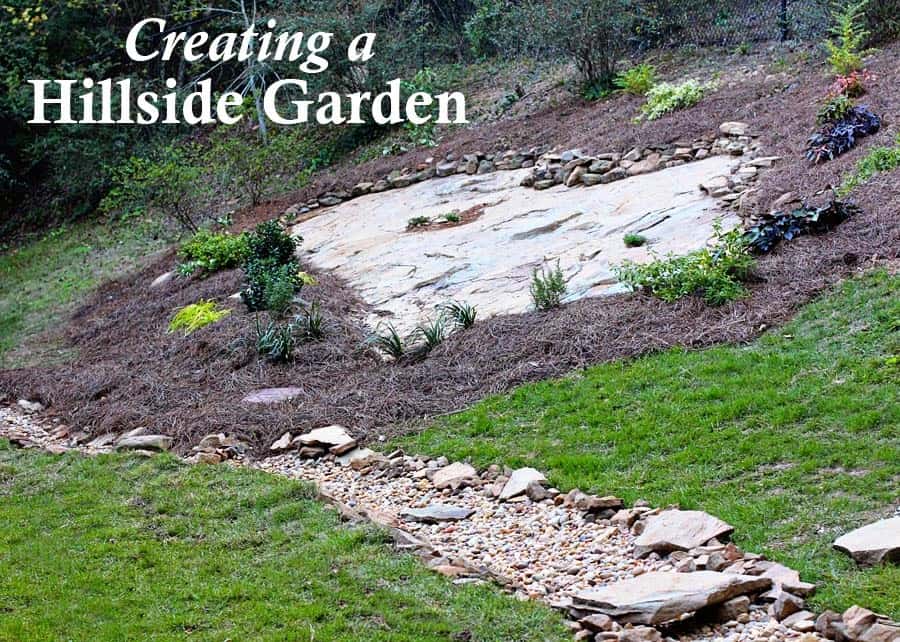Achieve a Beautiful Outdoor Sanctuary With Thoughtful Steep Hill Landscape Design Solutions
Changing a high hill right into an exciting exterior oasis presents unique challenges that call for cutting-edge landscape design remedies. By resolving concerns such as erosion control and accessibility, one can produce a harmonious blend of beauty and performance. Strategies such as terracing, the setup of maintaining wall surfaces, and the choice of native plants play vital roles in this process. In addition, including water functions can further enhance the landscape's appeal. However, recognizing the intricacies of these aspects is important for attaining a really natural and welcoming environment. What techniques will best fit your hill's certain characteristics?
Comprehending Steep Hill Challenges
Landscape design on high hillsides presents unique obstacles that need careful factor to consider and tactical preparation. The inclination of the surface can bring about concerns such as dirt disintegration, water runoff, and restricted availability, all of which have to be dealt with to develop a functional and visually pleasing outdoor room.
Among the main interest in steep hillside landscape design is erosion, which can result from hefty rains or improper drainage. This not only affects plant health however can additionally threaten the stability of the incline. Applying effective erosion control procedures, such as planting ingrained greenery or making use of compost, is essential in maintaining the stability of the landscape.

Designing With Terracing Techniques
To alleviate the challenges posed by high hills, integrating terracing strategies can be an effective option. This layout approach changes a sloped landscape into a collection of flat, degree locations, producing an aesthetically striking and functional outdoor area. Terracing not only assists to stop soil erosion but likewise facilitates better water drainage, which is critical in preserving the wellness of plants and the stability of the hillside.
When making balconies, mindful factor to consider of the slope's angle and the dirt type is crucial. Each balcony needs to be tactically positioned to optimize sunlight direct exposure while lessening the threat of runoff. Making use of native plants on each degree can boost biodiversity, promote sustainability, and lower maintenance demands. Furthermore, including pathways in between terraces can enhance accessibility and encourage exploration of the landscape.
Terraced yards can offer multiple purposes, consisting of veggie production, ornamental displays, or exterior seats locations. By using products that mix harmoniously with the surrounding atmosphere, the terracing can enhance the overall aesthetic allure of the residential property. Eventually, thoughtful terracing changes high hills right into practical, stunning areas that invite interaction and satisfaction.
Implementing Preserving Wall Surfaces
When encountered with the obstacles of steep surface, executing retaining wall surfaces can offer both structural assistance and visual improvement to a landscape. These wall surfaces serve to avoid soil erosion, maintain inclines, and create level areas for horticulture or recreational usage. Steep hill landscaping. By effectively handling water drainage and reducing dirt motion, retaining wall surfaces safeguard your landscape investment while enhancing safety
Expert installation is vital to ensure the durability and effectiveness of keeping wall surfaces. Correct water drainage systems have to be integrated to soothe hydrostatic pressure, avoiding structural failure. Consulting with landscape experts will certainly ensure that the style straightens with your general vision while adhering to regional policies.
Choosing Indigenous Plants
Choosing native plants for your landscape style supplies numerous eco-friendly and aesthetic advantages. Steep hill learn this here now landscaping. Indigenous plants are adjusted to the local climate and soil conditions, calling for much less water and upkeep contrasted to non-native types. This versatility not only conserves sources however also advertises a healthier ecosystem, as indigenous plants sustain regional wildlife, including pollinators such as bees and butterflies
Including indigenous plants into your high hill landscaping can enhance dirt stability, minimizing erosion and advertising a balanced ecological community. Ingrained indigenous plants aid secure the soil, making them perfect for sloped areas. These plants often exhibit lively colors and diverse textures, producing a visually enticing landscape that balances with the surrounding this hyperlink setting.
When choosing native plants, consider their growth habits, seasonal passion, and compatibility with other types. Organizing plants with similar water and sunshine demands can cause a more natural style, while also simplifying upkeep. By selecting indigenous plants, you not just grow a sustainable outdoor sanctuary however additionally add positively to the local biodiversity, making certain that your landscape flourishes for many years to come.
Incorporating Water Features
Incorporating water attributes into your high hillside landscaping can substantially boost both the aesthetic allure and environmental performance of the space. The noise of flowing water creates a tranquil environment, while aesthetically, it can work as a centerpiece that attracts the eye and includes depth to the landscape.
When choosing water attributes, think about options that complement the natural shapes of your hill. Waterfalls, for example, can cascade the incline, developing aesthetic interest and promoting healthy water drainage. Fish ponds can likewise be incorporated right into the layout, urging regional wild animals and offering habitats for various varieties.
Moreover, the placement of plants around these features is vital. Indigenous water plants not only boost the beauty of the water function however additionally contribute to its ecological equilibrium by filtering pollutants and offering food for regional animals.
Maintenance is one more key variable; make certain that your water feature is made for simple upkeep. A properly constructed function will certainly need minimal intervention, permitting you to take pleasure in the elegance and peace it offers without excessive labor. Inevitably, attentively bundled water features can change your steep hill landscape right into an go to my site exciting outdoor sanctuary.
Final Thought
In final thought, transforming a steep hillside into a gorgeous outside sanctuary requires thoughtful landscape design strategies that address disintegration control and accessibility. The assimilation of terracing strategies, the application of maintaining wall surfaces, and the option of indigenous plants are necessary elements of effective layout.